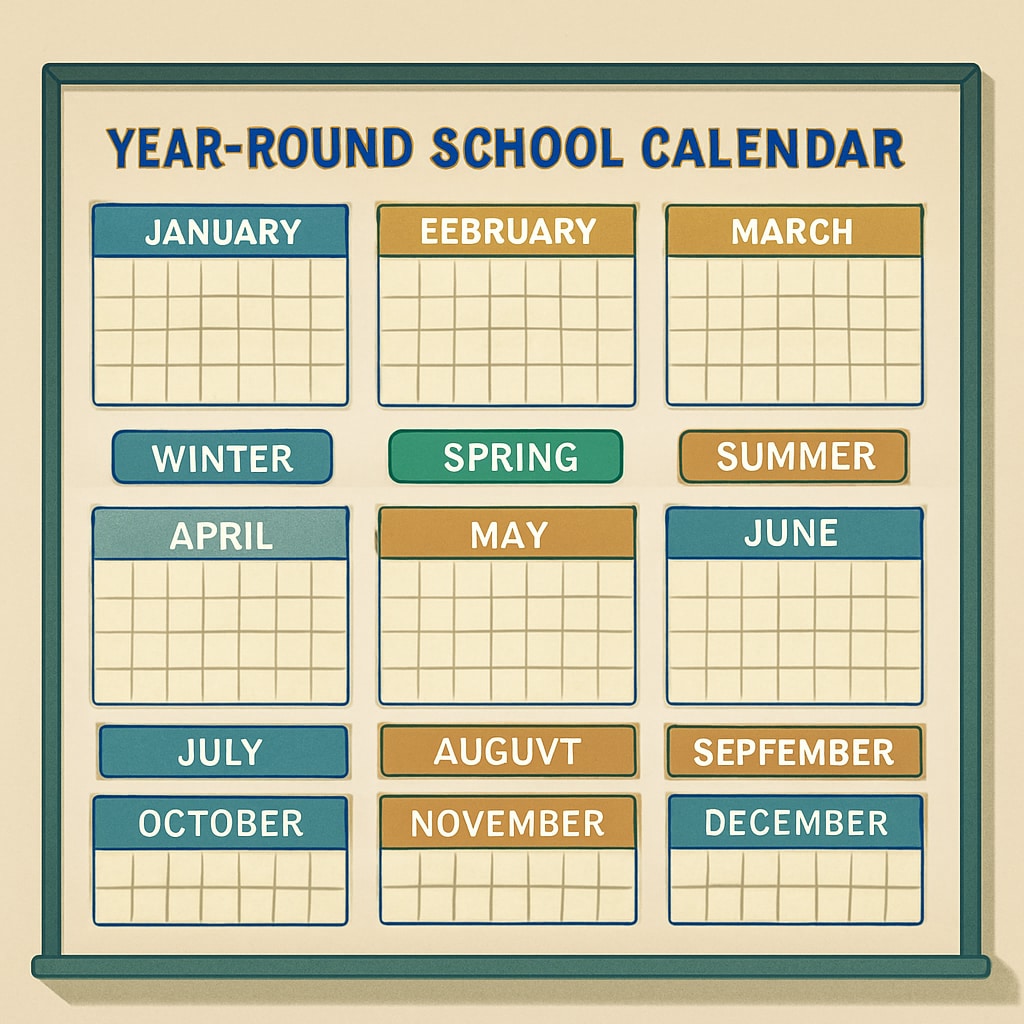The concept of year-round schooling, which challenges the traditional long summer break, has sparked debates in educational circles. By addressing issues such as “summer learning loss,” year-round schooling incorporates innovative schedules such as “one week on, one week off” to ensure consistent knowledge retention and improved student outcomes. This article explores how distributed learning models can transform K12 education, fostering continuous learning while eliminating the drawbacks of extended breaks.
Why Long Summer Breaks Are Problematic
Traditional school systems often feature a long summer vacation, typically lasting 8–12 weeks. While this schedule may have originated from agricultural needs in the 19th century, it poses challenges to modern education. Research shows that students can forget a significant portion of what they learned during the previous school year over the summer, a phenomenon known as “summer learning loss.” According to Britannica, students can lose up to 30% of their academic skills in math and reading during extended breaks.

Moreover, summer learning loss disproportionately affects students from lower socioeconomic backgrounds, as they often lack access to enrichment activities or learning resources during the break. This exacerbates the achievement gap, making it harder for disadvantaged students to catch up when school resumes.
The Benefits of Year-Round Schooling
Year-round schooling, also known as distributed learning, offers a solution to the challenges posed by traditional school calendars. Instead of a single long summer break, students follow a schedule that divides the school year into shorter terms with more frequent breaks. Popular models include “one week on, one week off” or 9-week learning cycles with 3-week breaks in between. These arrangements offer multiple benefits:
- Improved Knowledge Retention: Frequent breaks reduce the likelihood of forgetting material, as students have less downtime between learning sessions.
- Better Academic Performance: Students maintain a steady rhythm, which supports long-term comprehension and mastery of subjects.
- Reduced Burnout: Shorter terms prevent fatigue and stress, allowing students and teachers to recharge more frequently.
- Equity in Learning: Continuous schedules minimize disparities by ensuring consistent access to education and resources throughout the year.

Flexible Schedules for Modern Learners
In addition to combating summer learning loss, year-round schooling aligns better with the needs of modern learners. For example, the “one week on, one week off” model provides opportunities for enrichment activities, internships, or family vacations that don’t interfere with academic progress. Schools can also leverage these breaks for targeted interventions, such as tutoring or remedial programs, ensuring that struggling students receive additional support.
Furthermore, distributed learning can benefit educators by reducing the pressure to cover extensive curriculums within rigid timeframes. Teachers can plan lessons more effectively, incorporate hands-on projects, and adapt to students’ unique learning paces.
Challenges and Considerations
Despite its advantages, year-round schooling is not without challenges. Critics argue that altering traditional calendars may disrupt family routines and extracurricular activities. Additionally, implementing year-round schedules requires logistical adjustments, such as reconfiguring transportation, staffing, and facility maintenance.
However, studies from Wikipedia suggest that with proper planning and community involvement, schools can overcome these hurdles. The key lies in fostering collaboration among educators, parents, and policymakers to ensure that the transition serves students’ best interests.
Conclusion: A Path to Sustainable Learning
Year-round schooling offers a promising alternative to traditional education models, addressing critical issues like summer learning loss and enhancing knowledge retention. By adopting distributed learning schedules, such as “one week on, one week off,” schools can create a more balanced, equitable, and effective learning environment. While challenges remain, the potential benefits for students, educators, and communities make this approach worth exploring. As the future of K12 education evolves, year-round schooling could become a cornerstone of sustainable learning.
Readability guidance: This article uses short paragraphs, lists, and transitions to ensure clarity and engagement. Technical terms are defined in simple language, and external links provide further context.


